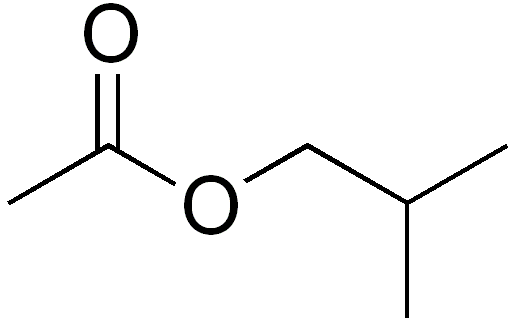Butyl
In organic chemistry, butyl is a four-carbon alkyl substituent with chemical formula -C4H9 . It is derived from either of the two isomers of the alkane called butane.
Each of the two isomers of butane give rise to two isomers of the butyl substituent. Thus, n-butane can connect at either the terminal or an internal carbon atoms, giving rise to "n-butyl" and "sec-butyl" substituents.
- n-butyl group; CH3CH2CH2CH2–, (fully systematic name "butyl")
- sec-butyl group; CH3CH2(CH3)CH–, (fully systematic name "1-methylpropyl")
The second, branched isomer of butane, isobutane can also connect either terminal methyl or internal carbon atoms, giving rise to "isobutyl" and "tertiary butyl" substituents, respectively.
- isobutyl group; (CH3)2CHCH2–, (fully systematic name "2-methylpropyl")
- tert-butyl group; (CH3)3C–, (fully systematic name "1,1-dimethylethyl")
Nomenclature
According to IUPAC nomenclature, "isobutyl", "sec-butyl", and "tert-butyl" are all retained trivial names.
| skeletal formula | common name | IUPAC name | systematic name | alternate notation |
| File:Butyl-group-2D-skeletal.png | n-butyl | butyl | butyl | butan-1-yl |
| File:Isobutyl-group-2D-skeletal.png | isobutyl | isobutyl | 2-methylpropyl | 2-methylpropan-1-yl |
| File:Sec-butyl-group-2D-skeletal.png | sec-butyl | sec-butyl | 1-methylpropyl | butan-2-yl |
| File:Tert-butyl-group-2D-skeletal.png | tert-butyl | tert-butyl | 1,1-dimethylethyl | 2-methylpropan-2-yl |
Butyl is the largest substituent for which trivial names are commonly used for all isomers.
The prefixes iso, sec and tert refer to the number of carbons connected to the primary carbon (also known as RI ("R prime"), the carbon that is connected to R). Iso means one, sec- means two and tert- means three.
Some examples
The following are the four isomers of "butyl acetate":
| butyl acetate | 
|
sec-butyl acetate | tert-butyl acetate |
Etymology
As the number of carbons in an alkyl chain increases, butyl is the last to be named historically instead of through Greek numbers. The name is derived from butyric acid, a four carbon carboxylic acid found in rancid butter. The name of butyric acid, in turn, comes from Latin butyrum, "butter".
Tert-butyl effect
The tert-butyl substituent is very bulky and used in chemistry for kinetic stabilisation together with other bulky groups such as the related trimethylsilyl group. The effect that the t-butyl group exerts on the progress of a chemical reaction is called the tert-butyl effect.
This effect is illustrated in the Diels-Alder reaction below where the tert-butyl substituent causes a reaction rate acceleration by a factor of 240 compared to hydrogen as the substituent.[1]
See also
References
- ↑ Factors affecting ease of ring formation. The effect of anchoring substitution on the rate of an intramolecular diels-alder reaction with furan-diene Serge Cauwberghs and Pierre J. De Clercq B. Tinant and J. P. Declercq Tetrahedron Letters Volume 29, Issue 20 , 1988, Pages 2493-2496 doi:10.1016/S0040-4039(00)87916-2